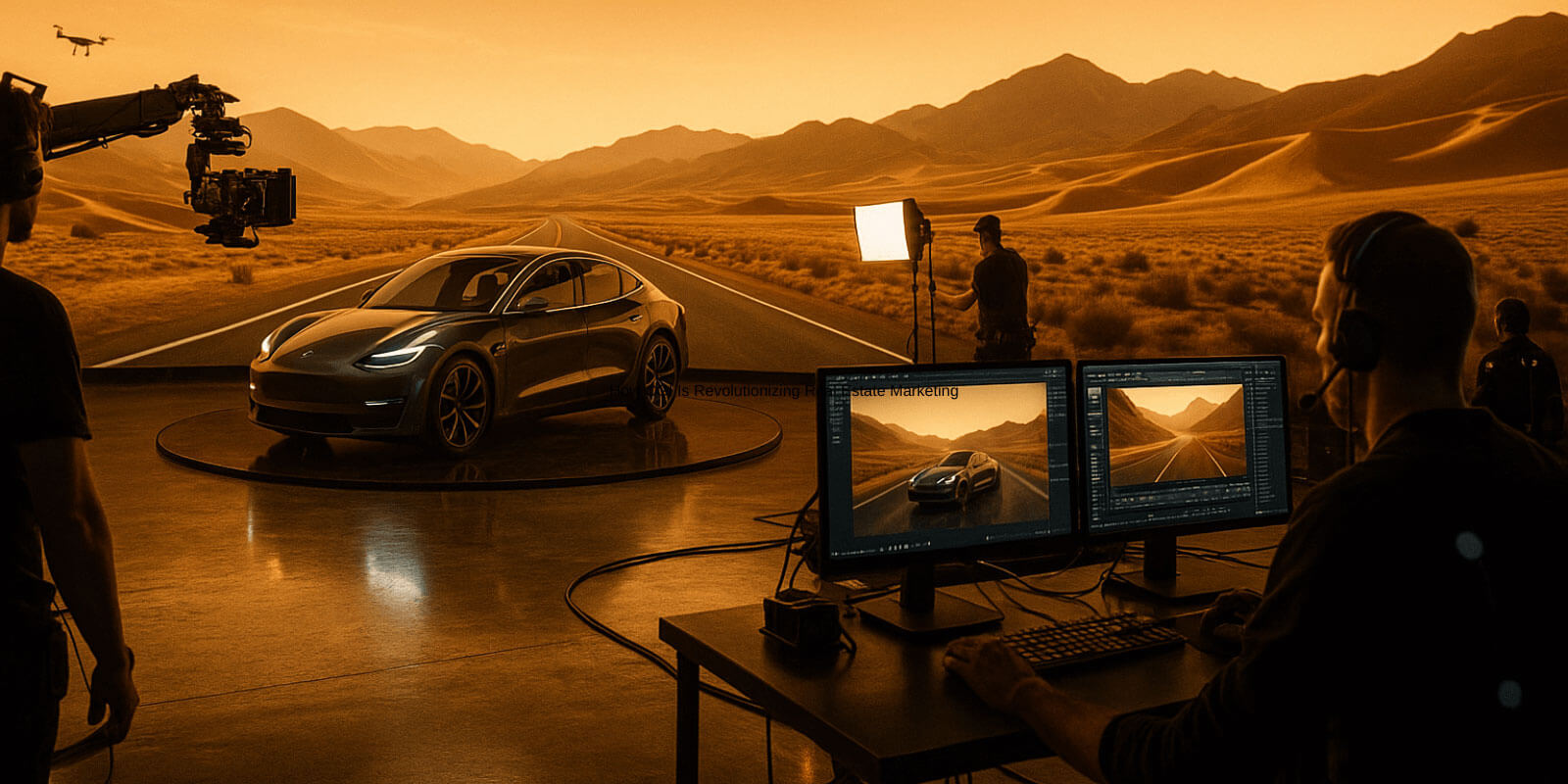| Beirut, Lebanon — Feb 27, 2023
How Virtual Production Is Changing Advertising
Virtual production is redefining the advertising industry by merging advanced technology with creativity to create immersive, cost-effective, and visually stunning campaigns. Traditionally, commercials relied heavily on physical sets, on-location shoots, and extensive post-production work. Today, virtual production combines real-time rendering, LED walls, and 3D environments to deliver dynamic results while saving time and resources. At its core, virtual production allows filmmakers and advertisers to blend live-action footage with digital environments in real time. Using game engine technology like Unreal Engine, directors and creative teams can visualize final shots on set, eliminating much of the guesswork. For advertising, this means brands can craft hyper-realistic or imaginative worlds without the limitations of traditional production. A car commercial, for example, no longer requires flying a crew to multiple countries. Instead, the car can be filmed in a studio surrounded by LED screens that display lifelike landscapes, giving viewers the impression of a global journey without leaving one location. One of the biggest advantages of virtual production in advertising is speed. Campaigns often require quick turnarounds to respond to trends, seasonal promotions, or market shifts. Virtual production enables teams to adjust environments, lighting, or even entire storylines instantly without the need for reshoots. This agility empowers brands to stay relevant and launch campaigns faster than ever before. Cost efficiency is another major benefit. Traditional productions often incur high costs for travel, logistics, and set construction. Virtual production reduces these expenses by bringing the locations into the studio. While the initial technology investment can be significant, long-term savings in logistics and post-production make it a valuable option for advertisers aiming to stretch their budgets while maintaining quality. Virtual production also enhances creative freedom. Unlike traditional shoots limited by weather, geography, or budget, advertisers can design any environment imaginable. From futuristic cityscapes to photorealistic natural settings, the only limit is creativity. This flexibility makes it easier for brands to stand out with visually unique campaigns that capture consumer attention in crowded markets. Another important dimension is sustainability. As brands face increasing pressure to reduce their environmental footprint, virtual production provides a greener alternative. Fewer flights, less material waste, and reduced energy consumption compared to on-location shoots help companies align with sustainability goals while still delivering high-quality content. For audiences, virtual production translates to more engaging and immersive advertising experiences. Realistic visuals, interactive storytelling, and seamless blending of real and digital elements make campaigns more memorable. In an age where consumer attention is fragmented, these captivating experiences can significantly improve brand recall and engagement. The rise of virtual influencers and digital humans also complements virtual production in advertising. Brands can integrate computer-generated characters into campaigns, offering flexibility and scalability without the challenges of coordinating with real-world talent. This approach is particularly appealing for global campaigns where cultural adaptation and localization are crucial. Looking ahead, virtual production is set to become a standard in advertising as technology becomes more accessible and affordable. The combination of creativity, efficiency, and sustainability positions it as a transformative force for brands. Advertisers who embrace this innovation early will gain a competitive edge, crafting campaigns that resonate deeply with modern audiences.
